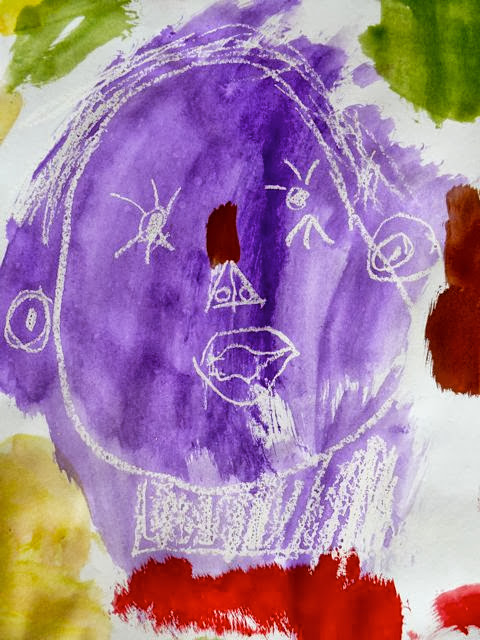Learning Areas: The Arts- creating and making, exploring and responding, Thinking- inquiry, creativity, Science- patterns, order and organisation, Communication- listening, viewing and responding
Materials: refrigerator box (or similar), boxed assemblage art (if you have access to it. I am lucky to have some good pieces by an artist friend at my home)
Materials: refrigerator box (or similar), boxed assemblage art (if you have access to it. I am lucky to have some good pieces by an artist friend at my home)
Welcome back! This term we are continuing our big project called Because
of me. One of the most exciting things about this project is
that we are creating it together – we don’t really know what the final result
is going to be like.
What do we know?
It is about you, the things you are interested in
and the things that are important to you; the person you are now and all the
possible things you could be in the future.
What else do we know?
We know that we are going to be connecting a few
different artistic elements – can anyone remember some of the elements? Colour,
texture, line…
Also we might use different forms and techniques like
sculpture, painting, drawing, collage, installation and assemblage. Have any of you heard of assemblage?
Putting things in boxes
Assemblage is really just a fancy way of saying "putting things together". It comes from the word assemble.
*At this point one of the children calls out "it's like school assembly!"
Maybe you and your family have bought something from a shop and had to build it yourself at home- that is assembling.
Maybe you and your family have bought something from a shop and had to build it yourself at home- that is assembling.
Artists assemble in lots of different ways. Some
artists draw, paint or cut out pictures for their assemblages. Some artists
gather objects.
I’d like to show you three special assemblages by an
artist called Tim Klein.
More Assemblage
Over here are some other pictures of assemblage work artists have done. I like this work by Rosalie Gascoigne. She only started exhibiting her art when she was already 57 years old. Can you see what she has used to make this work?
More Assemblage
Over here are some other pictures of assemblage work artists have done. I like this work by Rosalie Gascoigne. She only started exhibiting her art when she was already 57 years old. Can you see what she has used to make this work?
 |
| Metropolis, 1999 Image copyright of the Art Gallery of New South Wales |
 |
| Untitled (The Hotel Eden), 1945 National Gallery of Canada |
A Story – My Cat Likes to Hide In Boxes
Here is a story by Eve Sutton and Illustrated by
Lynley Dodd. You might already know the work of Lynley Dodd who wrote and illustrated the Hairy McLary books.
 |
| Book cover copyright Puffin Books, 1978 |
Putting things in boxes
We are going to have a go next time we work together at making a small assemblage in a box.Today, though we are going to play with the idea of boxes and what can be done with them. We are going to keep working on our artistic concept.
Playing with a box
Here’s a box. We can see what it is, but what could it be?
Let’s play by taking turns around the circle and using
our artists imaginations to transform this box.
What is it for?
What does it do?
Should we change the way the box sits- change it’s
orientation?
We want to see how many ideas we can generate.
I am definitely doing this activity again with kids. It is so much fun. They turned the box into a couch, swimming pool, running track, rocket, upside down sailing ship, lost dogs home, babies' playground...
Afterwards we recorded our ideas in visual diaries so that we can build on them when we start making our large fridge box constructions.
An observer for one of the kids with additional needs was in the class and thanked me afterwards saying it was one of the best classroom experiences she had ever witnessed.
 |
| Working together to launch the magic boat Image Copyright Heather Marsh, 2013 |
Afterwards we recorded our ideas in visual diaries so that we can build on them when we start making our large fridge box constructions.
An observer for one of the kids with additional needs was in the class and thanked me afterwards saying it was one of the best classroom experiences she had ever witnessed.
New Vocabulary Assemblage, orientation, relationships




































